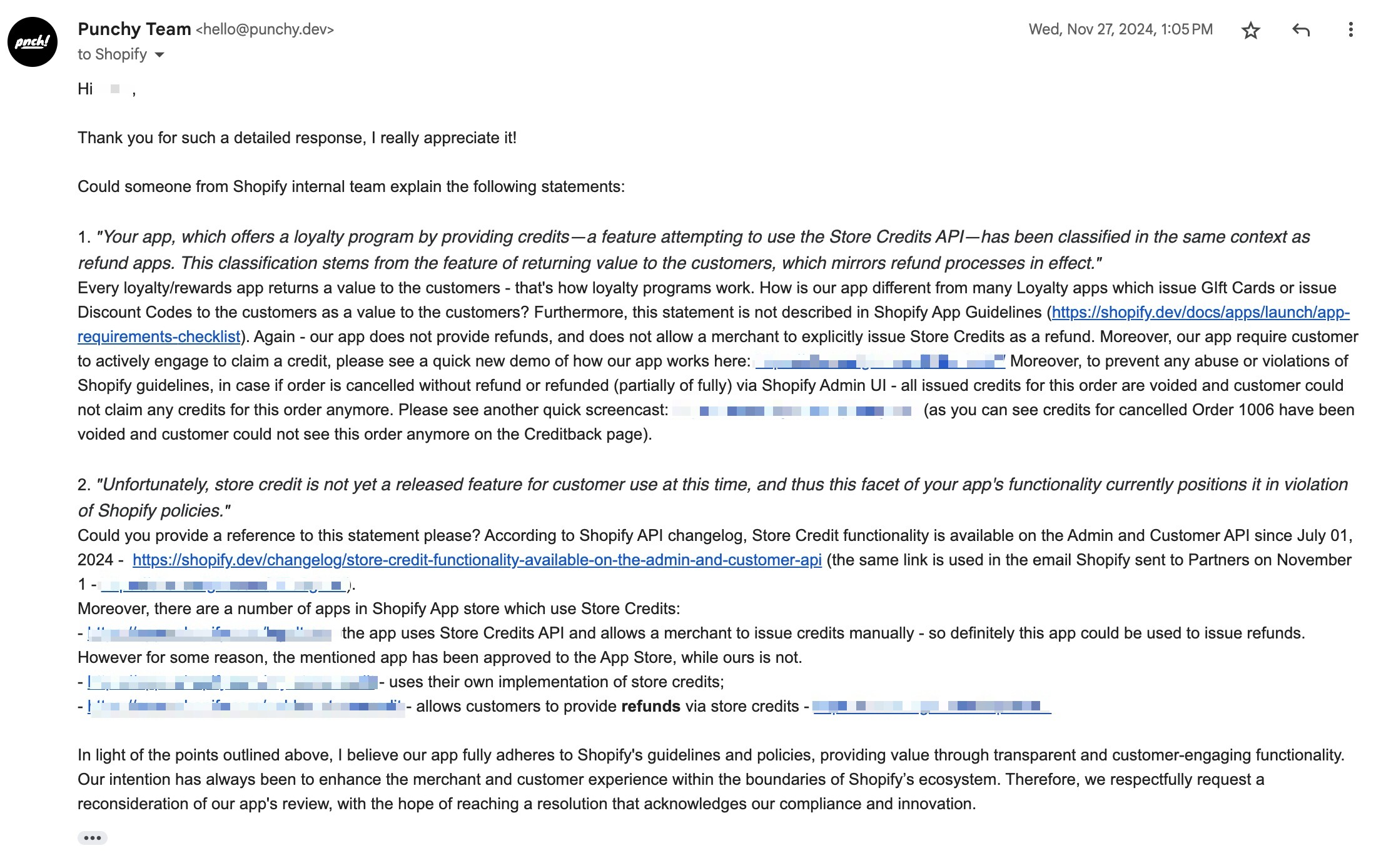How I built a Shopify App in 10 days
Building and launching a Shopify app is always an adventure, but my experience with Rebo took things to another level. What started as a simple idea turned into a month-long battle with Shopify’s review team. Here’s the full story of how I built and launched Rebo, a loyalty app that almost didn’t make it to the Shopify App Store.
The Two-Week Challenge
Back in 2017, I had considered building a loyalty app for Shopify but ultimately shelved the idea. Fast forward to November 1, 2024, I received an email from Shopify with a challenge: build and submit an app in just two weeks.

Huh, two weeks only? It took me a few days just to settle on an idea that would be feasible within that tight timeframe. I wanted something simple yet impactful — something that merchants would find valuable without requiring months of development. That’s when I landed on the idea of store credit.
The Idea: Store Credit, But With a Twist
The core concept was straightforward: when a customer places an order, they earn store credit. But instead of receiving it all at once, they have to claim it over time — say, $10 in store credit, but only $1 per day. This would encourage repeat visits and ongoing engagement with the store.
Shopify’s StoreCredits API made this idea possible, and I was excited to bring it to life.
Building Rebo: 10 Days of Sprinting
I officially started working on the app on November 3, and by November 13, it was ready for submission. That meant just 10 days from idea to submission — a brutal but rewarding sprint.

Rebo’s MVP had everything needed for a functional launch:
- Automatic issuance of store credits on qualifying purchases;
- A system for customers to claim their credits daily
- A clean and simple UI for merchants to manage the program
I submitted the app for review and felt a huge sense of accomplishment. But my celebration was short-lived.
The Unexpected Roadblock
Shortly after submission, Shopify’s review team sent me an email:
"Your app must not offer methods for processing refunds outside of the original payment processor."

Wait, what? They were categorizing Creditback (the core feature of Rebo) as a refund method? This wasn’t a refund app — it was a loyalty app, designed to incentivize repeat purchases. There was no direct connection to refunds, yet Shopify’s team was convinced otherwise.
The Month-Long Fight for Approval
I spent the next month going back and forth with Shopify’s support team, trying to clarify that Rebo wasn’t violating any rules. I provided examples of other approved apps that either clearly broke the same rule or did exactly what Rebo did.

I wrote multiple emails, explaining in detail how Creditback functioned and why it shouldn’t be classified as a refund system. But getting Shopify’s review team to acknowledge this was a slow and frustrating process.
The Victory: Rebo Gets Approved
Finally, after what felt like an eternity, I got the email on December 13 — one full month after submission. Rebo was approved! 🎉
This experience was a reminder of an important lesson: marketplace rules are sometimes open to interpretation, and even official review teams can misinterpret their own guidelines. If you believe your app is being unfairly rejected, don’t give up. Stand your ground, provide clear evidence, and keep pushing for approval.
Final Thoughts
What was supposed to be a quick two-week challenge turned into a 40-day marathon, but in the end, Rebo made it to the Shopify App Store. Now, merchants can use it to increase customer retention and drive repeat purchases through an innovative loyalty system.
If you’re a developer building for Shopify (or any platform with an approval process), my advice is this: expect challenges, stay persistent, and always advocate for your product. Even the toughest roadblocks can be overcome with enough persistence.
Have you faced similar struggles with app approvals? I’d love to hear your experiences!

